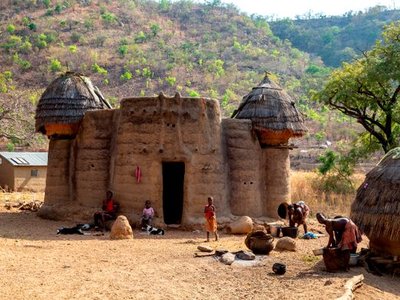Koutammakou


The traditional building practices of
the Batammariba people are featured center stage at Koutammakou, a mountainous region bordering Togo and Benin that
UNESCO
calls “a living cultural landscape.” These earth-tower houses, called
takienta
, are a national symbol of Togo, and are steeped in a strong cultural identity once threatened by other ethnic groups.
Batammariba roughly translates to “those who are the real architects of earth,” demonstrating how central the construction of these community dwellings has been to the Batammariba identity. Over the years, the takienta’s walls are reinforced by additional layers of mud and plaster, and when one is retired from use, its earthen core is
incorporated into a new structure
. Straw roofs usually top takienta structures, which are built to keep inhabitants and foodstuff cool under the hot Koutammakou sun.
About eight takienta make up a collective
sikien
, a full home of dedicated structures. One takienta might be used as a kitchen, others as bedrooms, and still others as food and livestock storage. Ancestral spirits are said to inhabit these dwellings and protect their living descendants. Takienta are now mostly used for storage and worship purposes, but are still used as primary dwellings in some areas of Koutammakou. The Batammariba people have a rich animist religion that recognizes both family and tribal deities and shows great reverence to nature. These beliefs are also manifested in elements of takienta construction, like the requirement that a dwelling’s main door always face westward to represent the sunset of the winter solstice.
The Batammariba people have been present in the Koutammakou region for hundreds of years, which was considered as one united area before colonial powers divided Togo and Benin through the mountains. The Togolese side is protected as a UNESCO World Heritage site, but the Benin side has no official protection.